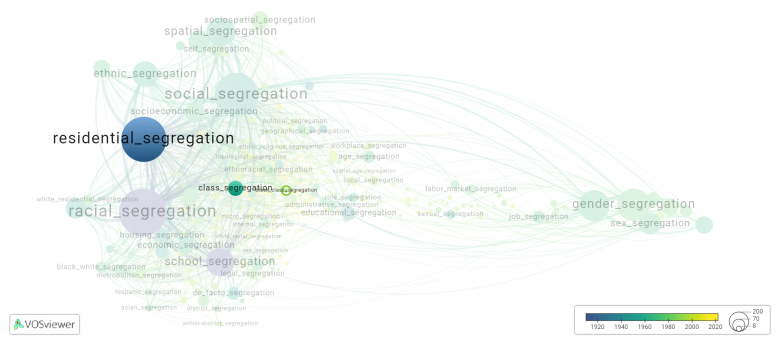Black class segregation: Difference between revisions
(Creating page) |
(Creating page) |
||
| Line 12: | Line 12: | ||
The consequences of black class segregation can be detrimental, as it perpetuates educational disparities and limits opportunities for social mobility. It further exacerbates socioeconomic inequalities, as students from disadvantaged backgrounds are disproportionately affected. Overcoming black class segregation requires addressing systemic issues such as poverty, unequal funding for schools, and providing equal access to quality education resources. | The consequences of black class segregation can be detrimental, as it perpetuates educational disparities and limits opportunities for social mobility. It further exacerbates socioeconomic inequalities, as students from disadvantaged backgrounds are disproportionately affected. Overcoming black class segregation requires addressing systemic issues such as poverty, unequal funding for schools, and providing equal access to quality education resources. | ||
==See also== | ==See also== | ||
==Related segregation forms== | |||
Black class segregation is frequently discussed in the literature with the following segregation forms: | |||
[[residential segregation]], [[class segregation]] | |||
[[File:black_class_segregation.png|780x780px]] | |||
For the complete network of associated segregation forms, see: | |||
year of publication https://tinyurl.com/2235lkhw | |||
Louvain clusters https://tinyurl.com/2d8wg5n3 | |||
betweenness centrality https://tinyurl.com/223udk5r | |||
disciplines where segregation forms first appeared https://tinyurl.com/244d8unz | |||
==References== | ==References== | ||
==Notes== | ==Notes== | ||
Revision as of 14:33, 27 September 2024
Date and country of first publication[1]
1999
United States
Definition
Black class segregation refers to the practice of separating black students from white students in educational institutions based on their social or economic backgrounds. This form of segregation is primarily driven by factors such as racial discrimination, socioeconomic disparities, and unequal access to resources and opportunities.
Historically, black class segregation was prevalent in the United States during the era of racial segregation laws, commonly known as "Jim Crow" laws. Under these laws, black students were often forced to attend separate and inferior schools compared to their white counterparts. These segregated schools typically had limited funding, inadequate resources, and lower-quality education, perpetuating educational inequities.
Although legal segregation was abolished with the landmark Supreme Court case, Brown v. Board of Education in 1954, de facto segregation in education based on socioeconomic factors still persists. Many urban areas with predominantly black populations face concentrated poverty and limited access to quality education, leading to the segregation of black students into schools with high rates of poverty and underperforming academic outcomes.
The consequences of black class segregation can be detrimental, as it perpetuates educational disparities and limits opportunities for social mobility. It further exacerbates socioeconomic inequalities, as students from disadvantaged backgrounds are disproportionately affected. Overcoming black class segregation requires addressing systemic issues such as poverty, unequal funding for schools, and providing equal access to quality education resources.
See also
Related segregation forms
Black class segregation is frequently discussed in the literature with the following segregation forms:
residential segregation, class segregation

For the complete network of associated segregation forms, see:
year of publication https://tinyurl.com/2235lkhw
Louvain clusters https://tinyurl.com/2d8wg5n3
betweenness centrality https://tinyurl.com/223udk5r
disciplines where segregation forms first appeared https://tinyurl.com/244d8unz
References
Notes
- ↑ Date and country of first publication as informed by the Scopus database (December 2023).
At its current state, this definition has been generated by a Large Language Model (LLM) so far without review by an independent researcher or a member of the curating team of segregation experts that keep the Segregation Wiki online. While we strive for accuracy, we cannot guarantee its reliability, completeness and timeliness. Please use this content with caution and verify information as needed. Also, feel free to improve on the definition as you see fit, including the use of references and other informational resources. We value your input in enhancing the quality and accuracy of the definitions of segregation forms collectively offered in the Segregation Wiki ©.
Black class segregation appears in the following literature
Sims M. (1999). High status residential segregation among racial and ethnic groups in five metro areas, 1980 1990. Social Science Quarterly, 80(3), 556-573. https://doi.org/
